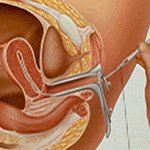Articles in the IUI procedure Category
Artificial insemination, IUI procedure »
IUI is usually suggested for those couples who have been trying to conceive for a year or more without success and have been found to have infertility issues. It is always recommended to perform a complete infertility examination before undergoing this process.
In general, artificial insemination is used when:
A woman’s cervical mucus is scant or hostile to sperm. Through IUI, sperm directly reaches the uterus, bypassing the cervix and the cervical mucus.
The man has a low sperm count, though the sperm should be healthy.
Male infertility due to antibodies to his own …
Artificial insemination, IUI procedure »
The most ideal time to perform a IUI is within six hours of ovulation, either before or after. When there are male infertility issues many doctors advise that the IUI is done after ovulation. If there are female infertility issues, it’s usually advised that you do the IUI before the ovulation as chances are higher when the sperm is there just waiting for the egg.
When timing of the IUI is based on and HCG injection, the IUI is usually done between 24 and 48 hours later. Average timing is to …
Artificial insemination, IUI procedure »
Intrauterine insemination has a higher success rate than intravaginal insemination or intra-cervical insemination as it places the good motile sperm near the Fallopian tubes where there will be one or more eggs available for insemination.
IUIs can be performed either with the partner’s sperm or with donor sperm. It is recommended that the patient abstain from sexual intercourse for two to three days before the procedure. The male partner is asked to produce a semen sample by masturbation, one to two hours before the procedure is to be performed or a …
Artificial insemination, IUI procedure »
It is sometimes also called sperm preparation or spinning. It is a laboratory technique for separating sperm from semen, and separating motile sperm from non-motile sperm, for use in assisted reproduction (IUI, IVF).
The washing technique for near normal specimens is mixing the ejaculate after liquefaction with the appropriate washing medium followed by centrifugation. (A centrifuge is a machine that separates materials with different densities by spinning them at high speed.) The supernatant is discarded and the sediment (sperm rich fraction) is re-suspended in more washing medium. This process is repeated …
Artificial insemination, IUI procedure »
Timing is more important for IUI than it is for intercourse. The reason is that, during intercourse, sperm travels through the cervical canal. There are glands and mucous in the cervix that sustains the sperm and acts as a reservoir that releases sperm into the uterus slowly over several days.
During an intrauterine insemination, the sperm are released into the uterus. The sperm do not remain viable for as long a period of time. Consequently, the sperm must be inseminated close to the time of ovulation.
One method to time an IUI …
Artificial insemination, IUI procedure »
There are many factors that determine how successful an IUI procedure will be. Some of these are the same factors that apply to any fertility treatment: age of the female, ovarian function, fallopian tube blockage, pelvic adhesions and other additional causes of infertility, whether fertility medications were also used etc.
One important factor that is specific to intrauterine insemination is the amount of motile sperm that is inserted into the uterus. Several studies have indicated that if a man has a low number of progressively motile sperm after the sperm …
Artificial insemination, IUI procedure »

Intra-Uterine Insemination (also known as artificial insemination) is the process of preparing and delivering sperm so that a highly concentrated amount of active motile sperm is placed directly through the cervix into the uterus. The current IUI pregnancy rate per treatment at UCSF is 14-15%. IUI can be performed with or without fertility drugs for the female patient. Compared to timed intercourse, it is generally accepted that there is a 2-fold higher pregnancy rate with IUI. Thus, for infertility patients, IUI is commonly performed as a low-tech, cost-effective approach to …